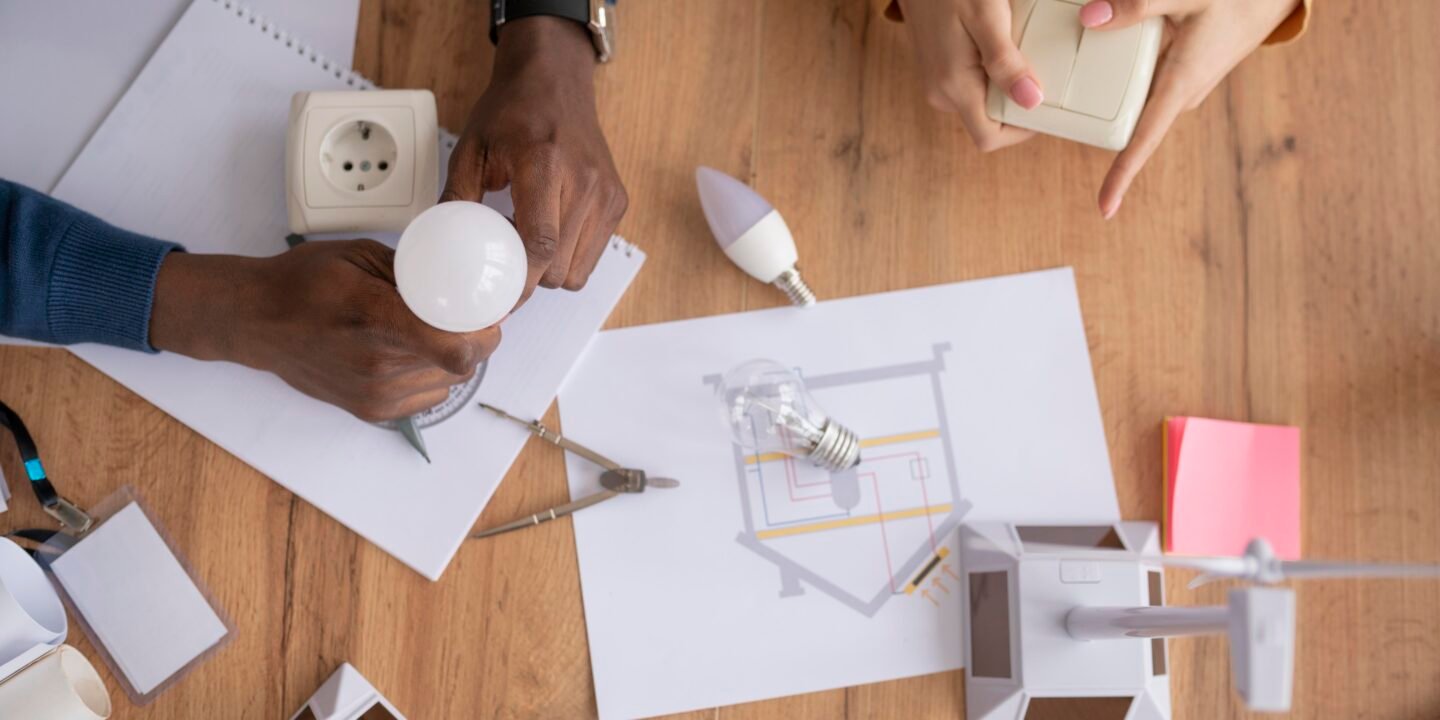
Home improvement doesn’t always require a professional contractor or a hefty budget. With a little time, creativity, and some basic tools, you can tackle a variety of DIY projects that can significantly boost your home’s value, functionality, and overall aesthetic. Whether you’re looking to improve curb appeal, update your living space, or add some custom touches, DIY home improvement is a rewarding way to make your home feel new again.
In this blog post, we will cover some easy-to-follow DIY projects that can transform your space without breaking the bank. From updating rooms with fresh paint to tackling larger projects like landscaping and small renovations, there’s something here for every skill level. Let’s dive in!
1. Freshen Up with a New Coat of Paint
One of the most cost-effective and impactful ways to improve your home is by giving walls, doors, and trim a fresh coat of paint. A well-chosen color can completely change the atmosphere of a room, whether you want to create a calm retreat, a vibrant focal point, or an open, airy feeling.
Paint Your Walls
- Materials: Paint, painter’s tape, drop cloths, paint rollers and brushes, paint tray, step ladder.
- How-To: Start by prepping the room—move furniture, cover floors with drop cloths, and use painter’s tape to protect trim and edges. Use a brush to cut in along the edges of the wall and then roll the paint on in large sections. Apply two coats for even coverage. Make sure the first coat is completely dry before applying the second.
Tip: Light, neutral shades like off-white, light gray, or soft beige can make small rooms feel larger, while bold accent walls in colors like deep navy or mustard yellow add depth and drama.
Update Cabinetry with Paint
If you’re not ready for a full kitchen or bathroom renovation, painting your cabinets can give your space a whole new look at a fraction of the cost. With the right prep work, you can get a smooth, professional-looking finish.
- Materials: Chalk or cabinet paint, painter’s tape, sandpaper, primer, paintbrush, paint roller, clear topcoat.
- How-To: Clean the cabinet surfaces, then lightly sand them to remove any gloss or rough patches. Apply a coat of primer, followed by your chosen paint color. Use a paintbrush for edges and a roller for larger surfaces. After the paint dries, apply a clear topcoat to protect the finish.
Tip: Go for a two-tone look by painting upper cabinets one color and lower cabinets another to create contrast and visual interest.
2. Install New Backsplashes
A new backsplash can elevate the look of any kitchen or bathroom. Installing one yourself can be a straightforward DIY project that doesn’t require specialized skills.
Tile Backsplash
- Materials: Tile (ceramic, glass, or peel-and-stick), tile adhesive, grout, grout float, tile spacers, utility knife, trowel, sponge, tile cutter (optional).
- How-To: Start by preparing the wall surface—clean and patch any holes. Use a trowel to spread adhesive on the wall, then begin placing tiles, using spacers to keep consistent gaps. Once the tiles are in place, allow the adhesive to dry, then apply grout using a grout float. Wipe away excess grout with a sponge.
Tip: If you’re looking for an easy, no-mess option, peel-and-stick backsplash tiles are a quick and affordable alternative to traditional tiles. They’re great for a beginner DIY project.
Subway Tile for Timeless Appeal
Subway tiles are a classic design element that never goes out of style. Their clean lines and simple design can be used in a variety of layouts, from a traditional brick pattern to a herringbone style.
Tip: Use white or light-colored grout with subway tiles to keep the look fresh and bright. For a more modern twist, you can use dark grout or bold-colored tiles.
3. Upgrade Lighting Fixtures
Lighting can have a huge impact on the look and feel of a room. Swapping out dated or dim lighting fixtures for modern, energy-efficient options is an easy DIY project that can refresh your home’s ambiance.
Install New Pendant Lights
Pendant lights are perfect for over kitchen islands, dining areas, or entryways. They come in a wide range of styles and can provide both task and ambient lighting.
- Materials: Pendant light fixture, ceiling hooks, electrical box, screws, drill, wire cutters.
- How-To: Turn off the power at the circuit breaker. Remove the old fixture and carefully disconnect the wires. Mount the electrical box and install the pendant light fixture by following the manufacturer’s instructions. Secure the light to the ceiling and reconnect the wiring.
Tip: If you’re looking for a statement piece, choose pendant lights in materials like brass, glass, or matte black for a modern touch.
Install Recessed Lighting
Recessed lighting, also known as can lights, can provide sleek and subtle illumination, ideal for creating ambiance without taking up space. Installing recessed lighting can be a bit more involved but is manageable with the right tools and careful planning.
- Materials: Recessed light fixtures, electrical box, drywall saw, drill, wire, wire connectors.
- How-To: First, plan the placement of your recessed lights and mark the locations on the ceiling. Use a drywall saw to cut holes, install the electrical boxes, and wire the fixtures to your existing electrical system. Install the can lights and secure them in place.
Tip: Use dimmer switches to adjust the lighting intensity and set the mood for different occasions.
4. Enhance Your Curb Appeal
The first impression of your home matters, and enhancing your curb appeal can significantly boost your home’s value. Simple projects like painting your front door, adding new house numbers, or refreshing your landscaping can make your home more inviting.
Paint Your Front Door
A bold, freshly painted front door can make a major statement. Choose a color that complements the rest of your home’s exterior for a cohesive look. Whether you go for a classic red, a soft navy blue, or a sophisticated black, painting your front door is a quick and easy DIY project.
- Materials: Exterior paint, painter’s tape, drop cloths, paintbrush, primer.
- How-To: Clean the door thoroughly and tape off the edges to protect surrounding areas. Apply a coat of primer, followed by your chosen paint color. Allow to dry completely before reattaching hardware like handles or knockers.
Tip: Adding a fresh coat of paint to your front door hardware (knobs, locks, etc.) is an easy way to further elevate the look.
Create a Flower Bed or Garden Path
Adding some greenery or flowers around your entryway is an excellent way to welcome guests and create a beautiful, inviting environment. If you have space, plant some colorful flowers or create a charming garden path with stepping stones.
- Materials: Flowers or plants, soil, mulch, stepping stones, garden gloves, small shovel.
- How-To: Choose plants that thrive in your climate and are appropriate for the amount of sunlight your entryway receives. Create a flower bed by digging holes, adding soil, and planting your flowers. For a garden path, lay down stepping stones or gravel along a well-defined path.
Tip: For a more modern, low-maintenance approach, opt for drought-tolerant plants like succulents or ornamental grasses.
5. Install Floating Shelves for Storage and Style
Floating shelves are an excellent solution for adding storage and display space without the need for bulky furniture. They work well in living rooms, kitchens, bathrooms, and even home offices.
Install Floating Shelves in the Living Room
- Materials: Floating shelf brackets, wood shelves, screws, drill, level, pencil.
- How-To: Use a level to mark the wall where you want to place your shelf. Drill holes for the brackets, then install the shelf according to the manufacturer’s instructions. Secure it tightly and arrange books, plants, or decor items on top.
Tip: Floating shelves are perfect for displaying collections, plants, framed photos, or decorative objects. Stick to a minimalist design for a modern, clean look.
Bathroom Floating Shelves
For small bathrooms, floating shelves are a great way to add storage without taking up floor space. They can hold toiletries, towels, or even decorative items like candles and plants.
Tip: Install a small shelf above the toilet or sink for added convenience, and choose a waterproof material like treated wood or metal for durability in a bathroom environment.
6. Upgrade Your Floors with DIY Solutions
If your floors are looking tired or outdated, there are several DIY options to give them a fresh, new look.
Install Peel-and-Stick Vinyl Flooring
If you’re looking for an affordable, easy way to upgrade your floors, peel-and-stick vinyl tiles are a great option. Available in a variety of styles, including wood-look, stone, or tile patterns, these peel-and-stick tiles can mimic the look of more expensive flooring materials.
- Materials: Peel-and-stick vinyl tiles, utility knife, measuring tape, pencil.
- How-To: Measure and mark the floor where you want to lay your tiles. Peel the backing off the vinyl tiles and stick them to the floor, making sure they’re aligned properly. Cut any tiles as needed to fit along the edges.
Tip: For a more polished look, use grout to fill the seams between the tiles for an authentic tile appearance.
Refinish Hardwood Floors
If you have hardwood floors that have seen better days, refinishing them is a cost-effective way to restore their beauty. Sanding down the old finish and applying a fresh coat of polyurethane can give your floors a new lease on life.
- Materials: Floor sander, sandpaper, polyurethane finish, paintbrush.
- How-To: Start by sanding the floor to remove the old finish and create a smooth surface. Apply a coat of polyurethane, using a paintbrush for the edges and a roller for larger areas. Allow the finish to dry and apply additional coats as necessary.
Tip: If sanding seems daunting, consider using a refinishing kit that simplifies the process.
Conclusion
DIY home improvement projects offer an excellent way to add personal style, increase the functionality of your home, and even boost its value—all while saving money. From simple updates like fresh paint to more involved projects like installing lighting or updating flooring, these home improvement ideas can help transform your space into something you’ll love.
Remember, the key to successful DIY home improvement is taking it one step at a time. Choose projects that match your skill level, plan carefully, and don’t be afraid to ask for help if needed. With a little patience and a lot of creativity, you can achieve beautiful, cost-effective results that will make your home feel brand new.
Happy DIYing!
I hope this guide provides plenty of inspiration for your next DIY home improvement project!








